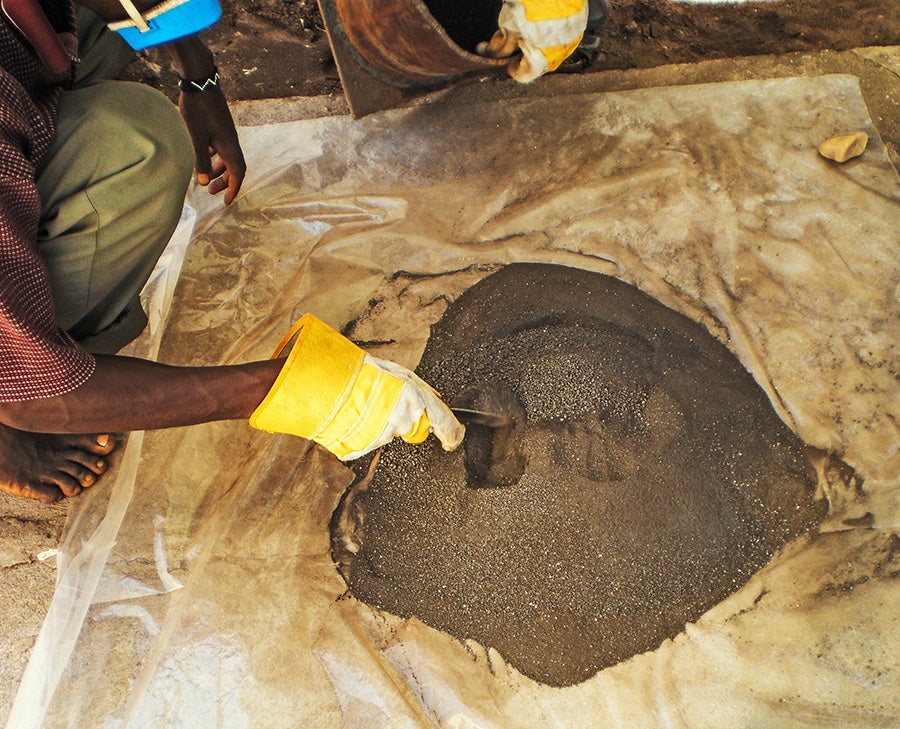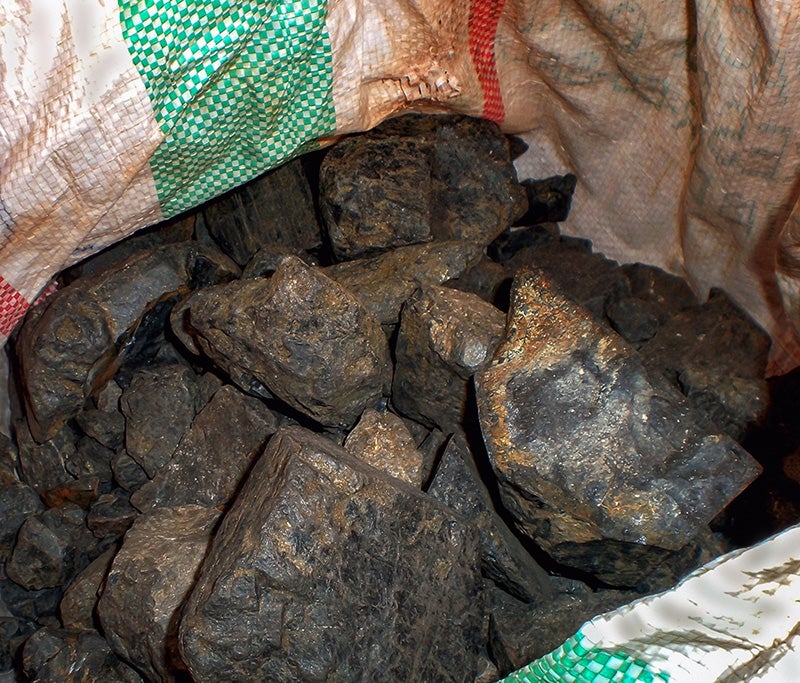The complicity of digital literacy and pedagogy in coltan mining
“When individuals purchase laptops, tablets, or smartphones, they are not the only ones who pay, and money is not the only cost.”
(Rachel Shapiro, 2019. “Transnational Networks of Literacy and Materiality: Coltan, Sexual Violence, and Digital Literacy.” College English, Volume 82, Number 2, 219.)
Written by Joshua Schulze
This article is explicitly addressed to teachers and educators, especially of literacy and composition. The author, Rachel Shapiro, is an assistant professor in the Writing Arts department at Rowan University in Glassboro, New Jersey. She received her PhD in Composition and Cultural Rhetoric from Syracuse University. The primary purpose of her study is to facilitate a greater awareness among scholars of literacy and composition of their complicity in the issues faced by Congolese citizens; that is, she wants to complicate the often uncritical use of digital technologies in pedagogical practice and thought by situating them within a global network of inequality, exploitation, and violence.
Shapiro begins the article by claiming that, by the very term literacy, these days more often than not it tends to encompass digital practices and technologies by default. As a consequence, Shapiro argues that pedagogues are ethically compelled to confront the extent to which they participate in these material conditions and practices, and to actively avoid a disembodied attitude towards available technologies. In other words, although places like the DRC might be thousands of miles away, and using a laptop or smart phone might not feel, in any tangible way, like it materially affects someone else, that disembodiment and detachment from material reality is precisely what scholars and educators need to combat. It is because digital technologies can often feel so weightless and ephemeral that their material reality should be explicitly investigated and foregrounded. Shapiro further acknowledges this when she explains that tracing the coltan content in individual devices is near impossible, and, although tech companies are obligated to disclose their use of conflict minerals, coltan is often smuggled across borders and thus harder to track.

Even if it were possible to do so, however, Shapiro argues that this should not be solely considered a matter of individual complicity and ethical responsibility. Instead, knowledge of the structures and processes that make the mining of coltan systemically damaging to Congolese lives is equally, if not more so, important. Shapiro writes,
“Even if we could ensure that our own laptops and smartphones were conflict free, global flows of the ideologies and practices of contemporary literacy mean that teacher-scholars are imbricated in the material production of the digital.” (2019: 205)
This is equally true, she claims, in instances where digital technology is put to more progressive use as it is in any other. Indeed, somewhat boldly, Shapiro integrates discussions of accessibility and the multiple affordances of digital technologies in teaching and learning with her critique of coltan mining, maintaining that they still are complicit in this material cycle of exploitation and violence:
“But in supporting students’ literacy development, we may uncritically facilitate their embeddedness in literacy networks that span the One-Third/Two-Thirds World divide through material processes.” (2019: 206)
Here, Shapiro is using an alternative term to describe what are sometimes referred to as the first, second, and third world, or as developed and developing countries, or as the Global North and the Global South. The logic behind using the one-third and two-thirds world is that such a distinction avoids assigning a geographical or ideological empiricism, and instead categorizes countries on the basis of their quality of life, and what the perpetuators of the terms, Gustavo Esteva and Madhu Suri Prakash, refer to as social minorities and social majorities (1998). Scholar Chandra Talpade Mohanty also claims that such using these terms “draws attention to the continuities as well as the discontinuities between the haves and have-nots within the boundaries of nations and between nations and indigenous communities” (2003: 506).
For Shapiro, care taken with terminology, and with her own rhetorical and scholarly method, is part of the wider imperative to raise awareness of the ways in which daily, taken-for-granted activities and technologies are enveloped in global systems of oppression. When she sketches a history of the DRC, tracing a familiar timeline from King Leopold II’s ownership and exploitation through to is colonial rule, brief independence, subsequent dictatorship, and on-going occupation and civil war, Shapiro does so through the theoretical framework of transnational feminism in order to emphasize the provenance of sexual assault in the DRC, and to investigate its connection to coltan mining. In doing so, Shapiro counteracts some of the conventional wisdom surrounding sexual violence in the DRC, arguing instead that it ought to be understood as a consequence of structural and systemic conditions:
“While international narratives have cited coltan as the cause of sexual assault in the DRC through campaigns against the “Blood iPhone,” few situate their discussion within a nuanced consideration of the history of gender roles, armed conflict, and political-economic realities in the region. Coltan is linked with the economic and social instability, as well as colonial histories, that have engendered a culture of sexual violence. The location of this mineral within the broader constellation of power points to the underlying history of the One-Third World sponsoring and profiting from material struggle in the Two-Thirds World.” (2019: 214-215)

Shapiro further describes how coltan relates to sexual violence by pointing to the gender roles and lack of economic opportunity afforded to women in the DRC, for many of whom, with their husbands often at work in the mines, there are precious few options for self-sustenance. As a result, millions of Congolese women turn to sex work to provide for themselves and their children, who often work in the mines regardless. Shapiro argues, in conjunction with anthropologists and other scholars who have studied sexual violence in the DRC, that women’s associations with the home, tradition, and the nation, make them targets for rape – as a way of sending a message to the enemy – in conjunction with other military tactics.
By elucidating the connections between such atrocities and the mining and extraction of coltan, which implicates and envelopes all of us to some degree, Shapiro is calling teachers and educators to stop ignoring this connection, and instead to foreground it. She implores pedagogues to use every opportunity they have to encourage students to critically engage with and think about the global networks that they participate in, whether that is at the institutional level, the epistemological, or in everyday practice. Shapiro closes by further emphasizing the importance of understanding digital technologies as material, in spite of popular understandings and myths – something that can also be done in the classroom:
“we might help students to meaningfully complicate our social myths about the democratic value of digital and mobile technologies (e.g., the Twitter revolution), through analysis of the social and material consequences of material production and disposal of our devices” (2019: 221)
Finally, Shapiro acknowledges that while such acts might not materially improve the well-being of Congolese citizens, because it remains an issue about which far too many know far too little, any encouragement to learn more about it and to critically engage with one’s own complicity is an improvement on existing circumstances:
“And so, while designing critical writing assignments will not solve the problem of rape in the Congo, will not end ewaste and save impoverished children in the Two-Thirds World from exposure to the devices’ toxins, I believe that small, potent gestures of critical problem-posing with students will make a difference (Selfe). Not to act in some decisive way in response to these concerns is to remain wholly complicit within them.” (2019: 221)
About the author of the article
Rachael Shapiro teaches Writing, Research, and Technology, Intro to Writing Arts, Evaluating Writing, and Situating Writing. She works with students to develop their rhetorical flexibility across a range of writing spaces and genres, focusing on questions of social and political relevance. She has taught developmental, freshman, critical research, professional, and digital writing classes both online and face-to-face, in addition to years of writing center work. Her research centers on digital literacies, language politics, feminism, and globalization.
References:
Esteva, Gustavo, and Madhu Suri Prakash. (1998) Grassroots Post-modernism: Remaking the Soil of Cultures. London: Zed.
Mohanty, Chandra Talpade. (2003) “Under Western Eyes” Revisited: Feminist Solidarity through Anticapitalist Struggles. Signs: Journal of Women in Culture and Society, Vol. 28, No. 2, 499-535.
Shapiro, Rachel. (2019) “Transnational Networks of Literacy and Materiality: Coltan, Sexual Violence, and Digital Literacy.” College English, Volume 82, Number 2, 204-225.


